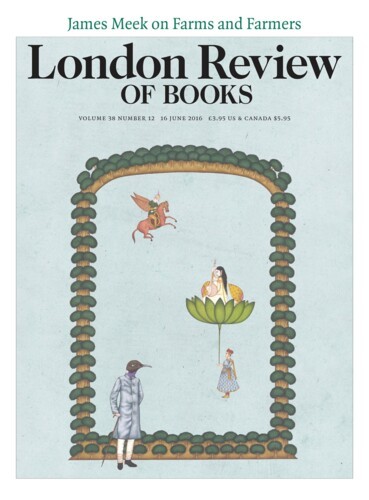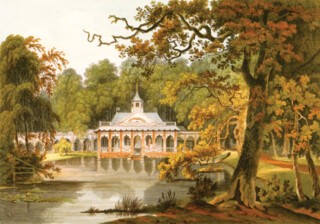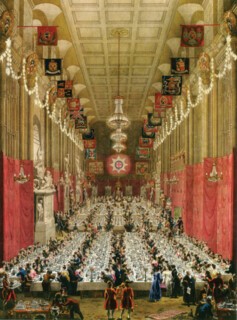In 1811, at the age of 26, Prince Hermann von Pückler-Muskau inherited the estate of Muskau (nearly 200 square miles in size, annexed to Saxony in 1806 but allotted to Prussia by the Congress of Vienna and partly absorbed by Poland in the 20th century), together with the smaller estate of Branitz. He was determined not only to carry out improvements but to create a landscape park on the English model. Unfortunately, he also inherited massive debts which frustrated these ambitions. And then his father-in-law bequeathed his fortune to his mistress. So, at the suggestion of his wife, his close collaborator in such enterprises, Pückler divorced her, and set off to Britain in the hope of finding an heiress to marry. The opportunity to inspect the planting and draining and new styles of gardening was an additional draw. He left in September 1826, visiting Goethe en route, and stayed for more than two years.
The letters the prince wrote to his former wife, his ‘dearest’, his ‘most beloved’, his ‘precious Julie’ (her real name was Lucie), were later published and are here translated. In the printed version all references to his mercenary purpose were deleted, although in his first year away he was forever attending balls, soirées, routs, race meetings and country house parties at which this purpose might be best advanced. By the time he set off for Wales and Ireland, he had abandoned the hunt. Throughout the letters, however, he seems keen to draw attention to his delight in female company, archly alluding to a brief liaison with the famous singer Henriette Sontag, and, mysteriously, to a nude painted by Titian which comes to life for his benefit (and which presumably cost him a great deal of money); he speaks of adoring the ‘soulful blue eyes’ and kissing the ‘velvet’ hand of Lady Garvagh (who was married to a cousin of the prime minister, George Canning), of peeping beneath the scanty rags of a comely Irish harvester, and playing charades with teenage girls in the house of Lady Morgan in Dublin. The tone is oddly like that of someone who is eager to reassure an older sister of his orthodox sexual orientation.
Pückler’s reliability as a reporter is not easy to confirm but occasionally it is possible to verify a claim. He describes a ‘magnificently boring’ fête given by the Marquess of Hertford in rooms upholstered and draped and carpeted in ‘flesh pink’, crimson, scarlet and white, with contrasting black-patinated bronzes. By chance an inventory of the contents of Lord Hertford’s villa in Regent’s Park survives which closely corresponds, although without the alarming carnal epithet. Other sources confirm his account of the extraordinary Chinese dairy at Woburn, approached through massed azaleas and rhododendrons, and of John Nash’s elegant gallery in Regent Street with its models and plaster casts – two other buildings that no longer survive. When Pückler retells stories told him by others we begin to suspect that some scepticism might have been appropriate. At Whitby, which is about as far north as he goes, he hears that a lump of rock fell from the cliff onto a local girl seated below, knocking her head off. This would be easier to credit were we not to hear about falling slate decapitating and amputating the limbs of quarrymen in north Wales, or had he not repeated the story of two Irishmen returning home from the fields with scythes over their shoulders, one of whom, using the pole of the scythe to poke at a salmon in shallow water, decapitates himself. Had Mr Jingle met the prince on top of a coach and told him about the man who was beheaded by a low arch, his sandwich remaining in his raised right hand, one feels that the prince, like Mr Pickwick, but for very different reasons, might have written it down.
An appealing aspect of the later letters, written from Wales and Ireland or from Paris (where he stopped for a while on his return), is the prince’s willingness to chat to, and learn from, everyone – fellow travellers, coachmen, innkeepers, booksellers, gardeners. That he was often virtually, although not intentionally, incognito must have made this easier. From an Irish farmer he learns about the harvesting and propagation of oysters. From an official in the Paris morgue that suicide by drowning is significantly less frequent when the water is freezing cold.
The prince brought no obvious political or religious theories or prejudices to bear on his observations. He is impressed by Parliament but perceives the need for reform; marvels at the country’s new wealth and power but is not convinced that it will endure; approves of the law’s respect for property but does not care for the established church. He had considerable previous acquaintance with Britain, formed on a visit of nine months in the retinue of the Emperor of Russia and the King of Prussia in 1814 – enough for him to declare that the stuffed giraffes in the British Museum, which he visited soon after reaching London on his second visit, were apt symbols of British taste. His generalisations about the English are more negative than seems justified by the people and situations he describes, and may have been added or amplified after the disappointing outcome of his mission. He frequently echoes the remark that Napoleon is reputed to have made about the English being a nation of shopkeepers, a characteristic that must have been especially annoying to someone who had failed in a classy form of shoplifting.
The letters are haunted by Napoleon and Byron to much the same degree as are the writings of Stendhal and Pushkin, and Byron’s account of English high society in the last five cantos of Don Juan frequently comes to mind when reading Pückler’s account of its more rigid or frigid lords and ladies, and the relaxed culture of the country house. But in some significant passages his vision is strongly coloured by German Romanticism. No ecclesiastical building still in use impresses him more than Bath Abbey. Inside, the paving and walls completely covered with monuments seem to him the epigraphical and sculptural equivalent of a well-ordered picture gallery (in which it was then usual to find works hung frame to frame). The abbey’s façade with the perpendicular grid converted into ladders that angels clamber up and down is just the sort of childlike conceit that would have appealed to German artists at that date. The whole experience, which included music from a mysterious source concealed by huge red curtains, inspired him to revive Goethe’s idea of the Gothic as a truly Germanic creation. His description of Tintern Abbey before it was cleansed of vegetation and consigned to special care is one of the most valuable to have survived, not least because of his awareness of the artistry behind its picturesque beauty. In recollection it is elevated to a sublime combination of nature and architecture, as if painted by Caspar David Friedrich, or by Pückler’s friend Friedrich Schinkel, then the leading architect in Berlin:
standing in that allée of ivy-clad columns … you see them recede in perspective until they come together three hundred feet ahead of you, terminating in a magnificent window eighty feet high and thirty feet wide; and behind the window’s entwined stone traceries, you catch sight of a thickly wooded peak, with steep, rocky crags emerging here and there. High up the wind wafts through the garlands of ivy.
The prince’s parks at Muskau and Branitz survive, lovingly restored, and his Hints on Landscape Gardening, published in 1834, is a classic text. The Letters of a Dead Man, published with support from the foundation that preserves and protects Muskau, and the American Foundation for Garden Studies, was first projected as an anthology of passages on gardens and landscape. But Linda Parshall, the translator and editor, rightly pressed for something more ambitious: the first complete translation into English of what is, after all, one of the most remarkable and comprehensive portraits of Britain in this period – and one made by a writer who is well known in Germany if little known in the English-speaking world, except to experts on landscape and gardening. Pückler’s descriptions of wild scenery are astonishing, as are his intrepidity and stamina when traversing such terrain; his accounts of magnificent parks, flower gardens and long-vanished garden buildings are especially valuable because they were made at a moment when concern for privacy and security were, increasingly, an impediment to curiosity. But the letters are of equal interest for historians who wish to understand the social rituals of that period, providing, for example, accounts of country house dinner conversation conducted against the background music of torrential male urine; of an audience, attired in deepest mourning for the deceased Duke of York, screeching with laughter at a pantomime; and of an awkward moment at court when, as George IV attempts to confer a knighthood, the sword sticks in its scabbard.
Unexpectedly, the letters may be most valuable to students of the theatre and of spectacle. They describe in detail how Shakespeare was performed by Kean and Kemble, the sweetness and the tragic power of Giuditta Pasta’s voice, the marvellous imitation of morning mist in a London pantomime, a performance by Billy the rat-killing dog. The high art is not always easy to distinguish from the low. The plot of a sequel to Don Giovanni that Pückler attended in London is worthy of the Carry On films. And in Dublin he was captivated by Andrew Ducrow, wearing a pale body-stocking, moving gracefully from the imitation of one famous antique sculpture to another, freezing as if turned to marble as he achieved each pose, the finale being the Dying Gladiator (whose last thoughts had been divined and broadcast by Byron). This performance, as artistic as the more exclusive attitudes of Emma Hamilton which had transfixed Goethe several decades earlier, seems to have been enjoyed by the same public that relished Ducrow’s acrobatic stunts and ludicrous comic turns.
We also gain insight into the aesthetic values and modes of interpretation characteristic of a cosmopolitan man of taste at that date. He visits the small but exceedingly choice collection of ‘a certain Mr Carr’ (the Rev. William Holwell Carr) not long before it was bequeathed to the National Gallery and is transported above all else by two paintings that detain few today: a small painting of Saint Augustine in a landscape of ‘unearthly glory’ by Garofalo, and the exceptionally finely executed and expensive Luini, then attributed to Leonardo da Vinci and generally believed to represent Christ with the Doctors (as it is labelled today) which the prince takes to be a portrait of Christ between Saint Peter and Saint John – an intelligent response to the absence of orthodox narrative and to Christ’s apparent age in the painting. By contrast, when confronted by an animated double portrait such as Van Dyck’s painting of the first Earl of Strafford with his secretary (then at Wentworth Woodhouse and still in the possession of the Fitzwilliam family), Pückler responds as if it were a historical drama painted by Delaroche, with Strafford holding his own death warrant and dictating his will. The prince’s historical imagination found all too stimulating a companion in the pseudoscience of phrenology, which explains his fascination with the Chandos portrait of Shakespeare (then at Stowe and now in the National Portrait Gallery), and the Azara herm, a bust portrait of Alexander the Great. Like other German travellers in the following decades he was astonished by the richness of London’s private collections, but he was not fooled into overestimating the general prevalence of good taste: at a ball in Londonderry House he noted that the marble statues (then very recently purchased from Canova’s heirs in Rome and now divided between the National Gallery of Art in Washington and the Metropolitan Museum in New York) were adorned with the bonnets and shawls of the dancers.
Historical portraits, ancient mansions and grand ruins were mostly to be found outside London, and the city itself impressed Pückler rather as New York was to strike many Europeans a century later: astonishing for the scale of its trade, the size of its shops, its unbridled growth, its modern amenities and contrivances, and the collisions frequently encountered between opulence and squalor. The prince’s adamant denial of the existence of poverty, whether in London or in the industrial cities, is perplexing, although he does comment on the working conditions in the Penrhyn slate quarry where hundreds of workers cling to the rocks ‘like blackbirds’ and injury is so common that he is reminded of field hospitals on a battlefield. By then he was on his way to Ireland, where he did find poverty and described it in detail, marvelling at the good humour and fertility that seem to accompany it. At this point the book develops a political dimension, for Pückler was a great admirer of Daniel O’Connell, the leading proponent of Catholic Emancipation, while at the same time receiving hospitality from, and attending to the views of, his opponents.
The official version of the genesis of this book is that Lucie showed some of the letters to a friend who recognised their potential popular appeal. So they were published in 1830, anonymously, under the pretence of being posthumous, and became a bestseller. The precautionary deletions, and the substitution of initials for proper names, must have encouraged speculation and publicity. I cannot be the first to wonder whether the possibility of publication might have been present in the back of the prince’s mind all along. The pursuit of an heiress may have provided a pretext for travel which, then as now, had its own attractions, not least as a substitution of larger horizons and fewer responsibilities for manifold and inescapable anxieties at home. Such a pursuit, though not a reputable activity, was perhaps less uncomfortable for someone of the prince’s rank than setting out to write for money, or at least admitting to doing so. One thing, however, was surely not contrived: the deep affection and respect the author expresses for his former wife. The comparison to Madame de Sévigné (whose letters to her daughter the prince knew) is not inappropriate. There was obviously not much room for a third person in this relationship and had any such triangle been formed it would not have been equilateral.
Send Letters To:
The Editor
London Review of Books,
28 Little Russell Street
London, WC1A 2HN
letters@lrb.co.uk
Please include name, address, and a telephone number.



